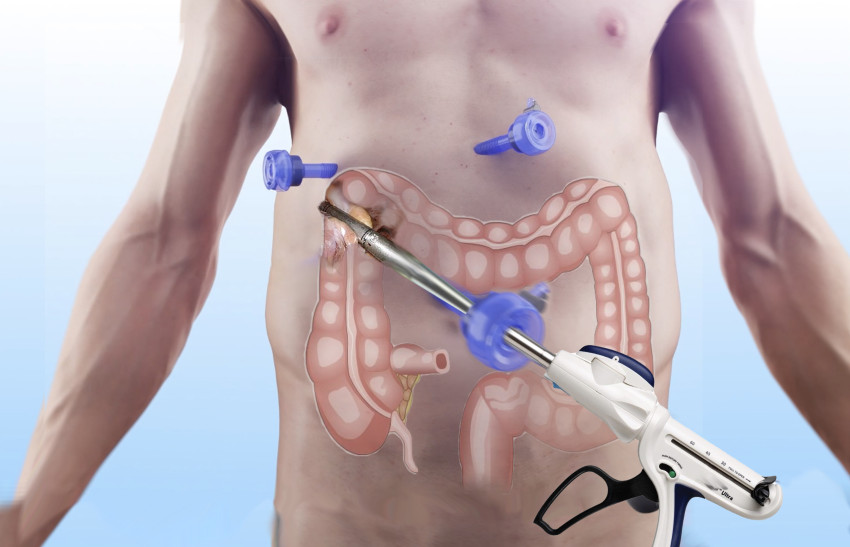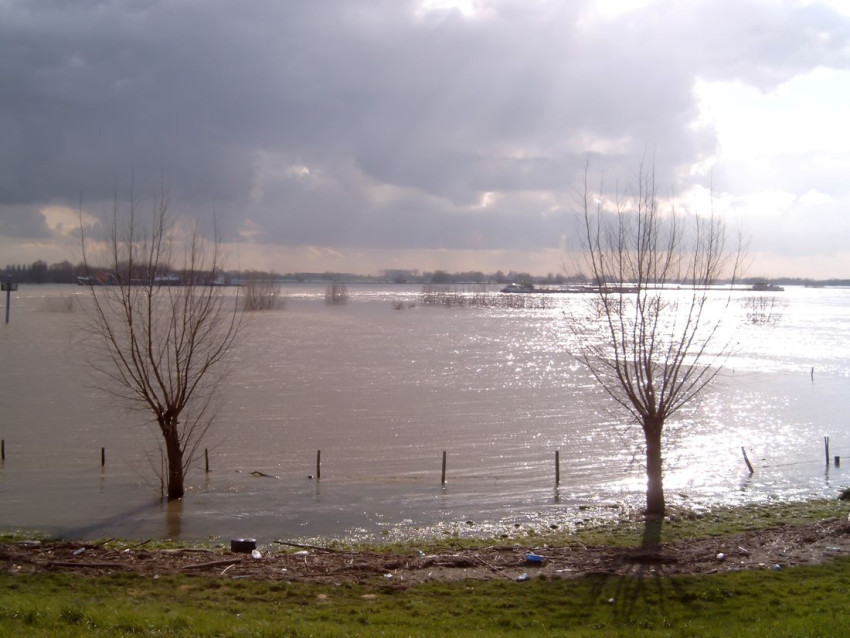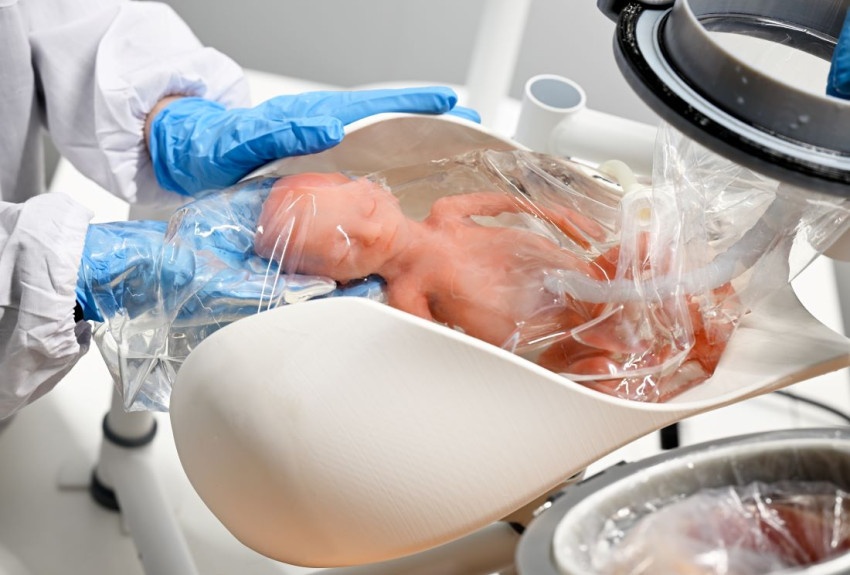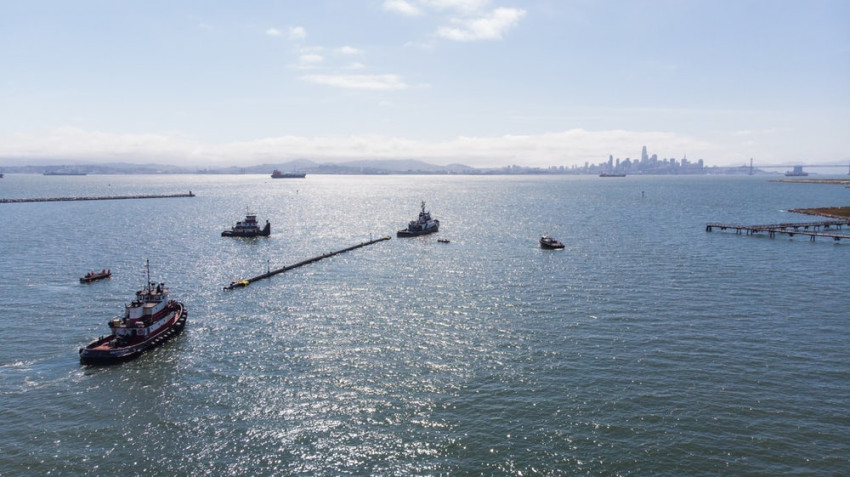
The Ocean Cleanup tests first section of plastic collection screen
The Ocean Cleanup has started testing the first 120 m of the screen designed to collect ocean plastic. The test is intended to assess how the screen behaves at sea.
The first section of 120 m comprises a plastic pipe that suspends a 3 m deep screen. This took place at Alameda, close to San Francisco. The section also has anchors that run to some hundred metres deep and ensure that the screen gradually flows along with the sea's current. Because the floating plastic waste flows faster, it is collected by the screen and then removed (read more about this in ‘Cleanup of ocean plastic starts this summer’).
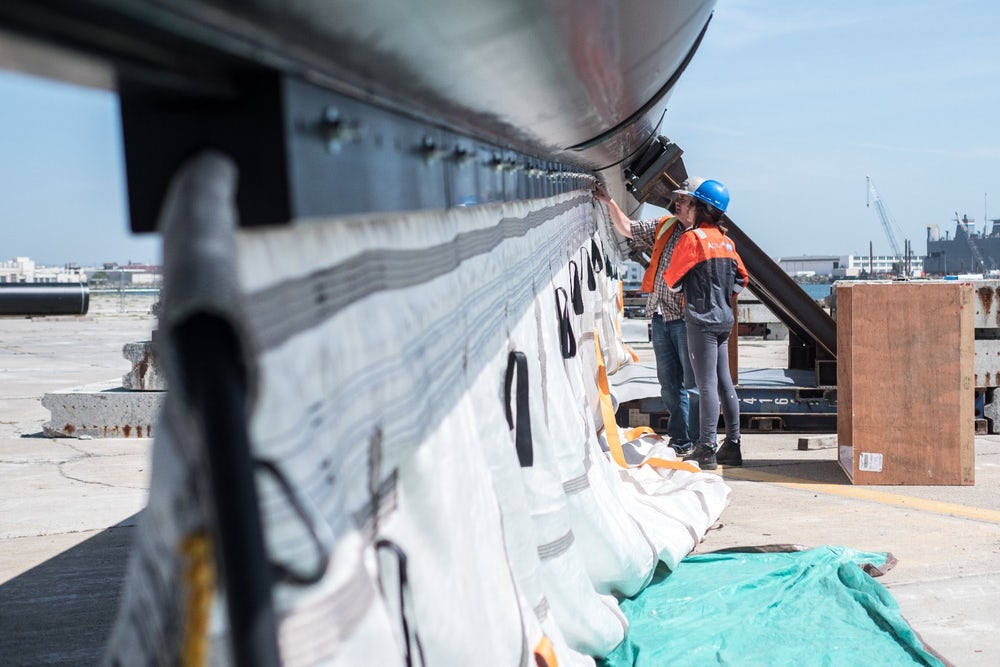
90 km out to sea
The current test is intended to demonstrate how the pipe, screen and anchors behave at sea. The complete section was towed out to about 90 km off the coast of San Francisco and will remain there for around two weeks. Towing was itself somewhat of an experiment, as dragging such a long pipe behind a tugboat requires factoring in waves and currents. Once at sea, the team from The Ocean Cleanup will remain close by to keep a watchful eye on the screen and carry out tests, partly by repeatedly deploying and retracting the screen in the sea. It is fitted with belts and straps for this purpose.
Longer screen
The test results are intended to help finish the final design, which will be 600 m long. The idea is that the longer screen will be positioned some 400 km off the coast this summer and tested for a period of one to two months.
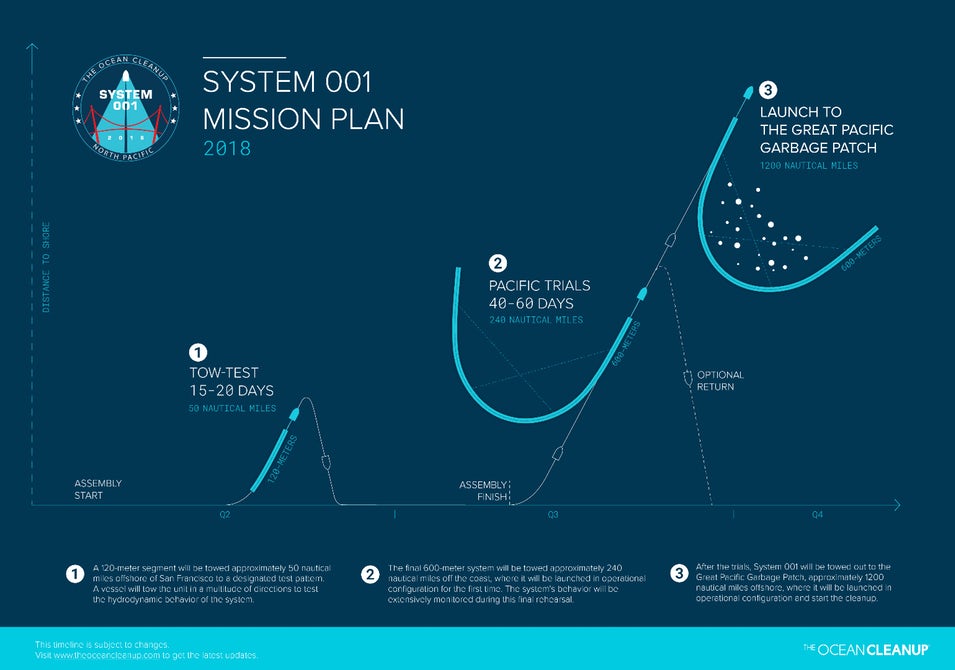
According to the new timetable, The Ocean Cleanup aims to commence collecting plastic in the Great Pacific garbage patch, an area in the Pacific Ocean around 2000 km from the coast of California where large volumes of plastic circulate, at the end of 2018.
If you found this article interesting, subscribe for free to our weekly newsletter!
Images: The Ocean Cleanup.


